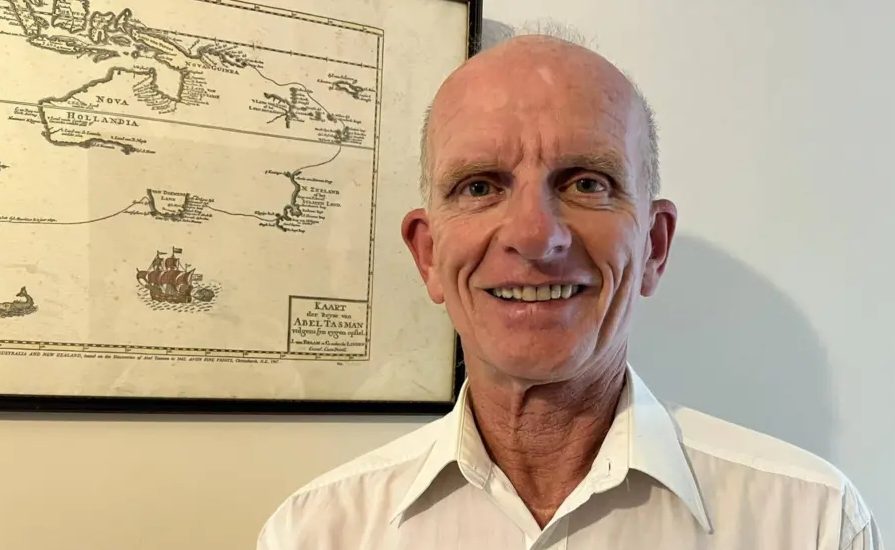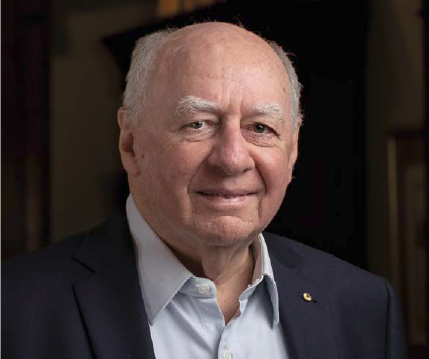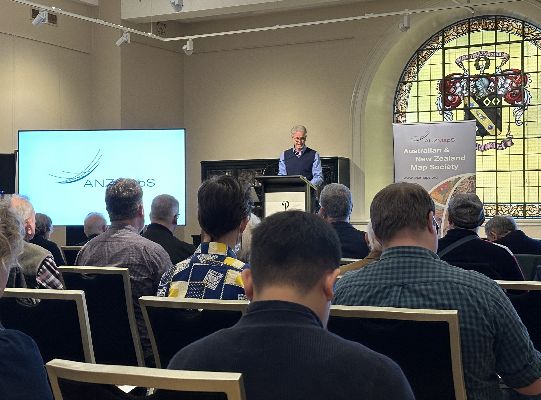With the ANZMapS Southern Frontiers conference at MONA in Hobart now just a few months away, preparations are well underway. The program is finalised, speakers are confirmed, and momentum is building for what promises to be a dynamic and thought-provoking event.

Keynote Address: Rüdiger Mack – Reinterpreting Tasman through Visscher’s Eyes
Wellington-based historian and antiquarian bookseller Rüdiger Mack will deliver the keynote address at Southern Frontiers. His 2024 book, First Encounters, brings newly translated extracts from Nicolaes Witsen’s Noord en Oost Tartarye (1705) into focus, particularly passages from the now-lost journal of Francois Jacobsz. Visscher, chief navigator on Abel Tasman’s voyages
Building on this research, Mack reconsiders the Dutch expeditions of 1642–43 and 1644. Was New Zealand understood to be an island long before Captain Cook’s arrival? How did Visscher’s confident mapping contrast with Tasman’s more cautious approach? And what do Witsen’s fragments reveal about Dutch hopes for a transcontinental strait or a navigable passage through northern Australia?
Mack’s keynote address will explore how conflicting interpretations of the Pacific shaped early European cartography—and how those maps continue to influence our understanding of the region today.

Robert Clancy AM – Charting Terra Australis: MONA’s New Acquisitions in Context
Few people bridge the worlds of medicine and maps quite like Emeritus Professor Robert Clancy, a pioneer in mucosal immunology and a leading authority on the mapping of Australia and Antarctica.
At Southern Frontiers, Professor Clancy will explore highlights from MONA’s newly acquired Maps of Australia holdings, which include rare and significant works such as Johann Reger’s 1482 edition of Ptolemy’s world map and James Cook’s 1773 Pacific chart. His presentation traces the evolving concept of Terra Australis, highlighting French contributions, religious and political influences, and the commercial ambitions that shaped early European mapping of the region.

Chet Van Duzer – Mapping Mecca at the Centre of the World
Chet Van Duzer, historian of cartography and board member of the Lazarus Project, is known for uncovering hidden meanings and visual strategies in medieval and Renaissance maps. At Southern Frontiers, he turns his attention to early Islamic cartography—and a curious distortion: the dramatic south-eastward extension of Africa.
Was this simply a Ptolemaic legacy, or did it signify something more profound? Van Duzer suggests that religious cosmology played a central role. By examining visual symmetry and sacred geography, he reveals how some Islamic mapmakers deliberately expanded the southern lands to place Mecca at the physical and spiritual centre of the world.
His presentation offers a compelling blend of visual analysis and theological interpretation, demonstrating how early Islamic maps combined geographic knowledge with devotional purpose.


